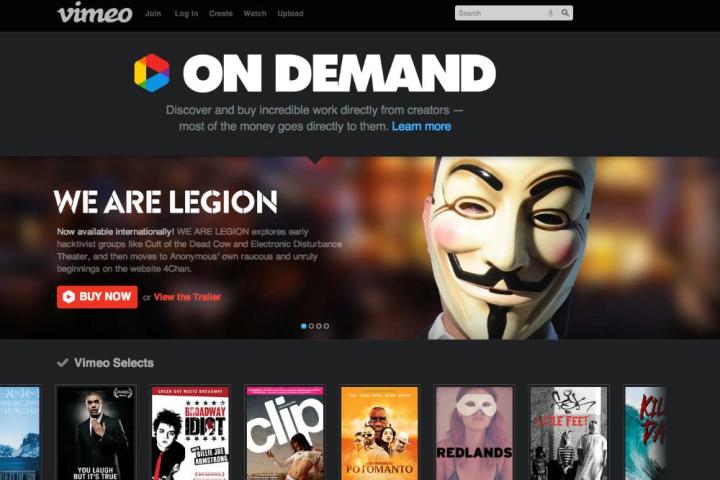
The emergence of crowdfunding sites like Kickstarter has been a real boon for independent filmmakers, with many able to build an audience before even a single frame has been shot, and funds raised through the site from that audience going toward the making of the movie.
Depending on the nature of the film and amount of money generously donated, a filmmaker’s pool of funds may run dry by the time it comes to marketing their work to a wider audience.
This is where video-sharing site Vimeo – a platform long-popular with the creative community – thinks it can help, with a new initiative offering crowdfunded filmmakers access to a $500,000 audience development fund.
The assistance will be offered to select filmmakers who’ve managed to raise at least $10,000 for their production through crowdfunding, with Vimeo’s funds put toward creating marketing campaigns to help broaden the movie’s exposure and build an audience.
In exchange for access to the marketing fund, Vimeo will have the right to show the work as an exclusive digital premiere on its direct-distribution Vimeo On Demand service.
“Vimeo is committed to empowering filmmakers with the world’s best platform for direct distribution,” Vimeo’s Greg Clayman said in a release, adding, “While crowdfunding has changed the game in getting films made, Vimeo is taking the next step supporting filmmakers to get their work seen and purchased on Vimeo and across the Web.”
The move follows a similar Vimeo-run initiative launched at last year’s Toronto International Film Festival when the video site offered select filmmakers $10,000 in exchange for first-run rights to show their work exclusively on Vimeo on Demand for the first month following release.
Vimeo on Demand allows movie makers to set a price and viewing period for streaming their work, while downloads can also be offered. The service is available to those signed up to its Pro service, a deal that currently costs $199 a year and includes benefits such as up to 1000GB of storage annually, unlimited HD uploading, no bandwidth caps or time limits, advanced statistics, and more. Filmmakers invited to take part in Vimeo’s latest program will be given a one-year Pro account for free.
Crowdfunded filmmakers interested in finding out more about the initiative are encouraged to fire off an email to crowdfunding@vimeo.com.
[PR Newswire via Mashable]


